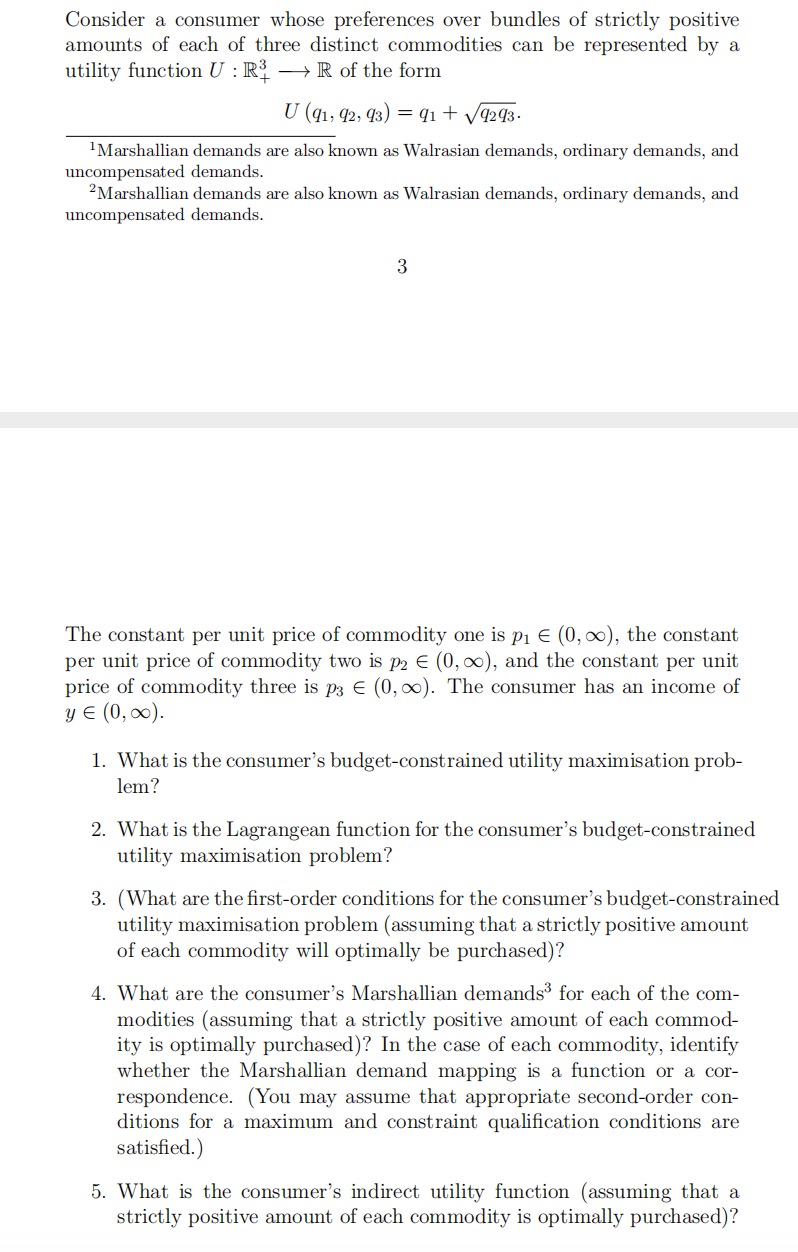Question
Consider a consumer whose preferences over bundles of strictly positive amounts of each of three distinct commodities can be represented by a utility function U
Consider a consumer whose preferences over bundles of strictly positive
amounts of each of three distinct commodities can be represented by a
utility function U : R3+ ?? R of the form
U (q1, q2, q3) = q1 + ?q2q3.
1. What is the consumer's budget-constrained utility maximisation prob
lem?
2. What is the Lagrangean function for the consumer's budget-constrained
utility maximisation problem?
3. (What are the fifirst-order conditions for the consumer's budget-constrained
utility maximisation problem (assuming that a strictly positive amount
of each commodity will optimally be purchased)?
4. What are the consumer's Marshallian demands3 for each of the com
modities (assuming that a strictly positive amount of each commod
ity is optimally purchased)? In the case of each commodity, identify
whether the Marshallian demand mapping is a function or a cor
respondence. (You may assume that appropriate second-order con
ditions for a maximum and constraint qualifification conditions are
satisfified.)
5. What is the consumer's indirect utility function (assuming that a
strictly positive amount of each commodity is optimally purchased)?

Step by Step Solution
There are 3 Steps involved in it
Step: 1

Get Instant Access to Expert-Tailored Solutions
See step-by-step solutions with expert insights and AI powered tools for academic success
Step: 2

Step: 3

Ace Your Homework with AI
Get the answers you need in no time with our AI-driven, step-by-step assistance
Get Started


